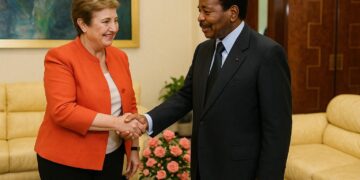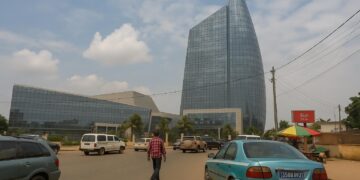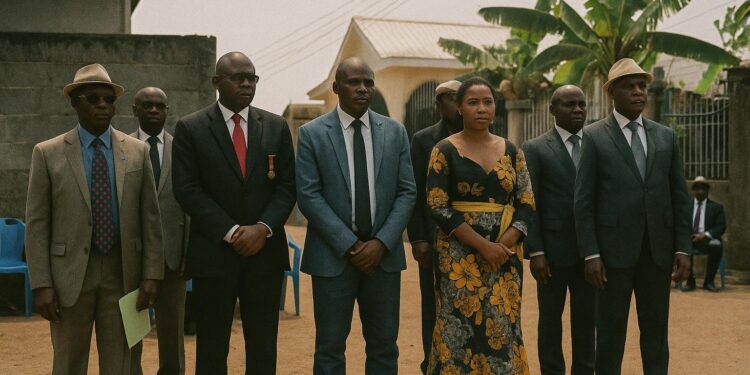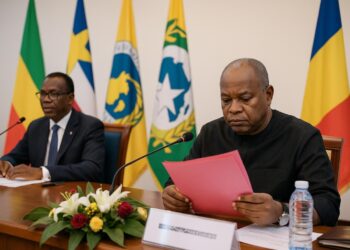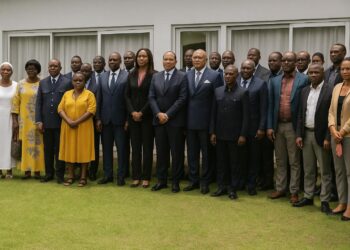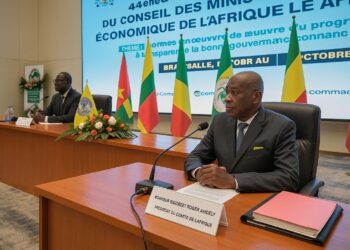Ceremonial Affirmation of Local Authority
The open-air courtyard of Madibou’s district hall, still dusted with late-season Harmattan sand, offered a deliberately symbolic setting for the investiture of five ward chiefs on 19 July. In the presence of prefectural officials and community elders, Administrator-Mayor Alain Milandou handed over tricolour sashes and leather-bound copies of the municipal code, signalling state authority translated into neighbourhood proximity (ACI, 19 July 2025). The brief but meticulously choreographed ritual echoed a tradition dating back to the post-independence era, yet was punctuated by contemporary references to participatory governance and the Sustainable Development Goals.
Mandates Rooted in Public Order and Service Delivery
Administrator-Mayor Milandou reminded the appointees that their legitimacy is derived not merely from a prefectural decree but from their capacity to relay municipal action plans down to the street corner. Their remit includes mediating petty disputes, monitoring informal settlements, liaising with police commanders and ensuring that refuse trucks can manoeuvre through the labyrinthine alleys of Mayanga and Moukondo. Such granular responsibilities have strategic resonance: the Ministry of Territorial Administration stresses that neighbourhood chiefs form the first institutional rung in the national security architecture, collecting intelligence on everything from micro-criminality to population flows (Ministry of Territorial Administration, 2024).
Gender Optics and Community Representation
The presence of one female chief among the five inductees was understated during the ceremony yet highly discussed in the margins. While women already manage several of Madibou’s eleven wards, the new appointment resonates with the government’s pledge, reiterated during the last Universal Periodic Review, to lift female representation in local decision-making bodies to 30 percent by 2030. Analysts caution, however, that symbolic inclusion must be matched by budgetary latitude and training opportunities. In his closing remarks, Prefect Gilbert Mouanda Mouanda implicitly acknowledged the challenge, promising ‘capacity-building seminars in administrative writing and conflict resolution for all chiefs, regardless of gender’. Such commitments align with UN-Habitat findings that effective women leadership at neighbourhood scale measurably improves sanitation compliance and school attendance (UN-Habitat, 2023).
Environmental Imperatives: The Looming Threat of Erosion
Of all the issues enumerated by the new chiefs, soil erosion dominated. Camille Diloubenzi, freshly installed in Ward 804, warned that a gully advancing thirty metres from the former Mayanga market bus stop ‘could sever the only service road linking two quartiers within a single rainy season’. Brazzaville’s southern topography, a patchwork of lateritic ridges and sandy depressions, is notoriously vulnerable to runoff accelerated by unregulated sand mining. The Congolese parliament recently adopted tighter regulations on quarrying, yet enforcement hinges on real-time reporting from local authorities. By elevating erosion control to a neighbourhood mandate, the prefecture positions chiefs as sentinels in an environmental early-warning system.
Prefectural Oversight and Continuity of Governance
The five appointments—formalised by Prefectural Order 006 of 25 April 2025—occur within a broader strategy of administrative continuity. Six incumbent chiefs were reconfirmed, giving Madibou an unusual equilibrium between experience and renewal. Such calibrated turnover mitigates the risk of parallel power networks while affirming that local governance remains firmly embedded in the national chain of command. Political scientists note that Congo’s decentralisation is intentionally incremental, reinforcing municipal capacities without diluting the unifying authority of the central state. That balance is critical for a capital city still absorbing rural-urban migration and negotiating the informal economies those newcomers generate.
Regional Governance within the National Development Agenda
Viewed from a macro lens, Madibou’s ceremony illustrates the operational layer of the National Development Plan 2022-2026, which places ‘modernisation of territorial administration’ alongside industrial diversification and climate resilience. By investing community chiefs with explicit deliverables—public order, hygiene, gender inclusion, environmental surveillance—Brazzaville’s authorities seek to stitch the national agenda into the urban fabric. International partners, from the African Development Bank to bilateral donors, increasingly request such evidence of local implementation capacity before releasing funds. The sworn commitment of neighbourhood chiefs, therefore, is more than civic pomp; it has tangible implications for project disbursements and diplomatic perceptions.
A Measured Step in the Pursuit of Proximity Governance
As the last notes of the brass band faded and residents dispersed, the practical work began: mapping vulnerable households, scheduling patrols, and negotiating waste-collection timetables with concessionaires. Success will be judged less by ceremonial splendour than by the reliability of public lighting, the drop in petty theft, and the stability of slopes during the next torrential rain. For Madibou, a district oscillating between peri-urban sprawl and civic aspiration, the five new chiefs represent a modest yet decisive investment in proximity governance—a cornerstone of the Republic of Congo’s broader quest for cohesive, resilient and inclusive development.



















